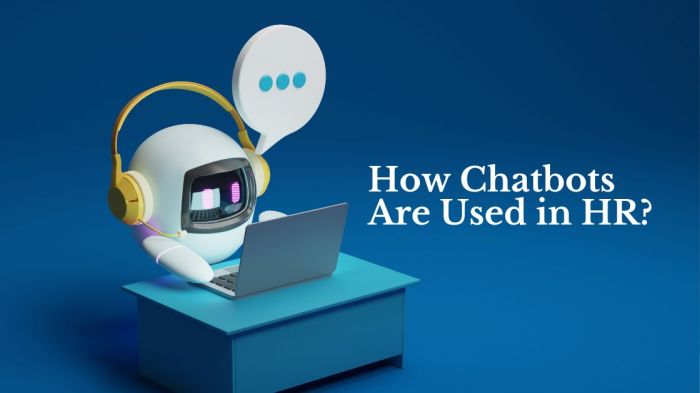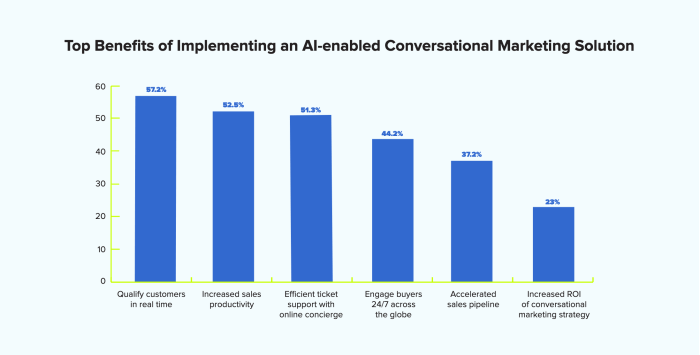Should you get paid for teaching a chatbot to do your job? This question, once relegated to science fiction, is rapidly becoming a very real ethical and economic dilemma. As AI rapidly advances, automating tasks once performed by humans, the lines between creator and creation, employer and employee, are blurring. We’re diving into the complex implications of this technological shift, exploring the potential for widespread job displacement, the value of uniquely human skills, and the ethical considerations surrounding compensation in a future increasingly shaped by artificial intelligence.
From the potential for mass unemployment to the emergence of entirely new job markets, the impact of AI on the workforce is undeniable. We’ll examine various scenarios, including the creation of alternative compensation models and the role of government and unions in navigating this transition. We’ll also look at the crucial role human expertise continues to play, even in a world increasingly reliant on automation. The conversation isn’t just about dollars and cents; it’s about fairness, equity, and the future of work itself.
The Economic Implications of AI-Driven Job Displacement
The rise of artificial intelligence and automation is rapidly reshaping the global economy, presenting both unprecedented opportunities and significant challenges. One of the most pressing concerns is the potential for widespread job displacement, leading to complex economic consequences that demand careful consideration. The speed and scale of this technological shift are unlike anything seen before, forcing us to rethink our approaches to workforce development and social safety nets.
Potential for Widespread Job Displacement
AI and automation are poised to impact nearly every sector, from manufacturing and transportation to customer service and even creative fields. Repetitive, manual tasks are particularly vulnerable, but advancements in machine learning are also enabling AI to perform complex cognitive functions previously thought to be exclusively human domains. This means that jobs requiring data analysis, decision-making, and even creative problem-solving are increasingly at risk. The World Economic Forum’s Future of Jobs Report, for instance, highlights the significant net job displacement predicted in the coming years, even while acknowledging the creation of new roles. The key takeaway is the need for significant workforce adaptation.
Economic Consequences of Job Displacement
Widespread job displacement due to AI could lead to a surge in unemployment rates, particularly affecting low-skilled workers and those in industries heavily reliant on automation. This could exacerbate existing income inequality, creating a larger gap between the highly skilled, high-earning individuals who work alongside AI and those displaced by it. The resulting economic strain could manifest in reduced consumer spending, slower economic growth, and increased social unrest. Governments may face significant pressure to provide social safety nets, such as unemployment benefits and retraining programs, to mitigate the negative impacts.
Impact on Various Sectors and Industries
The impact of AI-driven job displacement will vary significantly across sectors. Industries heavily reliant on manual labor, such as manufacturing and logistics, are expected to experience the most significant job losses. However, even white-collar jobs in finance, law, and healthcare are facing disruption as AI-powered tools become more sophisticated. For example, AI-powered diagnostic tools are already being used in healthcare, potentially reducing the need for some human medical professionals in certain tasks. Simultaneously, new roles in AI development, maintenance, and ethical oversight are emerging, though they often require highly specialized skills.
Hypothetical Scenario: The Automated Factory
Imagine a large manufacturing plant that traditionally employed 1,000 workers in various roles, from assembly line workers to quality control inspectors. With the implementation of advanced robotics and AI-powered systems, the plant automates many of its processes. While the initial investment is substantial, the company experiences significant cost savings and increased efficiency. However, this efficiency comes at a cost: 700 jobs are eliminated. The remaining 300 workers are highly skilled technicians and engineers responsible for maintaining and optimizing the automated systems. This scenario illustrates the potential for both significant job losses and the creation of a smaller, more specialized workforce. The economic consequences for the displaced workers and the community surrounding the plant would be considerable, highlighting the need for proactive strategies to manage such transitions.
Job Sectors at High and Low Risk of Automation, Should you get paid for teaching a chatbot to do your job
| Job Sector | Risk of Automation | Examples of High-Risk Jobs | Examples of Low-Risk Jobs |
|---|---|---|---|
| Manufacturing | High | Assembly line workers, factory operatives | Robotics engineers, industrial designers |
| Transportation | High | Truck drivers, taxi drivers | Transportation planners, logistics managers |
| Customer Service | Medium | Call center representatives | Customer experience managers, human resources professionals |
| Healthcare | Medium | Medical technicians (for specific tasks) | Physicians, nurses (requiring complex human interaction) |
The Value of Human Expertise in a World with AI

Source: decisionmakershub.com
The rise of artificial intelligence is undeniably transforming the job market, sparking concerns about widespread job displacement. However, focusing solely on the threat ignores a crucial point: human expertise remains irreplaceable in many, if not most, professions. While AI excels at automating repetitive tasks and processing vast amounts of data, uniquely human capabilities continue to hold significant value. This isn’t about humans versus machines; it’s about humans *and* machines working together to achieve greater efficiency and innovation.
AI’s strengths lie in its speed, accuracy, and tireless work ethic. It can analyze data far faster than any human, identify patterns we might miss, and perform tasks consistently without fatigue. But this efficiency is often limited to well-defined, structured problems. The human element introduces flexibility, creativity, and emotional intelligence – qualities currently beyond the reach of even the most sophisticated AI.
Irreplaceable Human Skills in Various Professions
Human skills like critical thinking, problem-solving, and adaptability are essential across numerous sectors. Consider a surgeon performing a complex operation: AI can assist with image analysis and precision, but the surgeon’s judgment, dexterity, and ability to react to unexpected complications remain paramount. Similarly, a teacher’s ability to connect with students, understand their individual needs, and adapt their teaching style is crucial – something AI currently struggles to replicate effectively. Even in seemingly automated fields like customer service, the human touch can be the deciding factor in building trust and loyalty.
Examples of Uniquely Human Capabilities
Many tasks require a blend of cognitive and emotional intelligence that AI lacks. For example, a creative writer relies on imagination, intuition, and emotional depth to craft compelling narratives. A skilled negotiator uses empathy, persuasion, and an understanding of human psychology to reach mutually beneficial agreements. A social worker requires empathy, cultural sensitivity, and the ability to build rapport to effectively support vulnerable individuals. These nuanced interactions are currently beyond the scope of AI.
Adapting and Thriving Alongside AI
The key for human workers isn’t to compete with AI, but to collaborate with it. This requires upskilling and reskilling to focus on uniquely human strengths. For example, instead of focusing on data entry, administrative assistants can focus on strategic planning and client relationship management, leveraging AI tools to automate routine tasks. Similarly, lawyers can use AI for legal research but retain their role in strategic legal argumentation and client advocacy. Embracing lifelong learning and acquiring skills that complement AI capabilities is crucial for navigating this changing landscape.
Human Workers vs. AI: A Comparative Analysis
| Attribute | Human Worker | AI |
|---|---|---|
| Creativity and Innovation | High | Low |
| Emotional Intelligence | High | Low |
| Critical Thinking and Problem Solving | High | Moderate (depending on task complexity) |
| Adaptability and Flexibility | High | Low |
| Speed and Efficiency (repetitive tasks) | Low | High |
| Data Processing Capacity | Low | High |
Skills Difficult or Impossible for AI to Replicate
The following skills are difficult or impossible for AI to replicate at present:
These skills rely on complex human experiences, emotions, and nuanced understanding that are not easily codified into algorithms.
So, you’re training a chatbot to replace you? Should you get paid for essentially teaching your job away? It’s a wild thought, almost as wild as the behind-the-scenes story of Tetris, as revealed in the surprisingly intense tetris movie history political thriller , a real-life geopolitical battle disguised as a game. Ultimately, the question of compensation hinges on your contract and the ethical implications – it’s a new frontier, just like the Cold War-era tech wars.
- Empathy and Emotional Intelligence
- Original Creativity and Artistic Expression
- Complex Strategic Thinking and Decision-Making in Unpredictable Environments
- Ethical Judgment and Moral Reasoning
- Intuitive Problem Solving and Insight
- Adaptability and Learning in Novel Situations
The Ethical Considerations of AI and Compensation

Source: amazonaws.com
The rise of AI presents a complex ethical landscape, particularly concerning its impact on the workforce. Replacing human workers with AI raises serious questions about fairness, equity, and the responsibility of both corporations and society to navigate this technological shift responsibly. The potential for bias in AI systems and the lack of clear guidelines for compensating individuals for training AI that ultimately replaces them are significant challenges we must address.
The ethical implications of AI-driven job displacement are multifaceted and demand careful consideration. Simply put, replacing human workers with machines without adequate planning or support is not only economically irresponsible but morally questionable. The transition to an AI-driven economy must prioritize human well-being and ensure a just and equitable outcome for all.
AI Bias and Employment Opportunities
AI systems are trained on data, and if that data reflects existing societal biases (e.g., gender, racial, or socioeconomic biases), the AI will perpetuate and even amplify those biases. This can lead to discriminatory outcomes in hiring, promotion, and performance evaluations. For example, an AI-powered recruitment tool trained on historical hiring data might unfairly discriminate against women or minorities if past hiring practices already favored certain demographics. Addressing this requires careful auditing of training data, algorithmic transparency, and the development of bias-mitigation techniques. Without such measures, AI could exacerbate existing inequalities in the job market.
Corporate Responsibility in Supporting Displaced Workers
Companies deploying AI to automate jobs have a moral and, in some cases, a legal responsibility to support the workers affected by this transition. This support should go beyond simple severance packages and include retraining programs, job placement assistance, and potentially even income support during the transition period. Examples of successful programs include reskilling initiatives offered by companies like Google and Amazon, focusing on providing employees with new skills relevant to emerging technologies. However, the scale and scope of these programs need to be significantly expanded to meet the potential challenges of widespread AI-driven job displacement. A proactive and comprehensive approach is crucial to minimizing the social and economic disruption caused by AI.
Arguments For and Against Compensating Individuals for AI Training
The question of whether individuals should be compensated for training AI systems that ultimately replace their jobs is hotly debated. Arguments in favor often center on the idea that these individuals are contributing directly to their own job displacement, providing valuable data and expertise that enhances the AI’s capabilities. This contribution deserves recognition and compensation, akin to intellectual property rights. However, opponents argue that such compensation would be impractical to implement on a large scale, potentially stifling innovation and increasing the cost of AI development. They suggest that focusing on retraining and social safety nets is a more effective and equitable approach. The debate highlights the need for a nuanced policy approach that balances the needs of individual workers with the broader economic implications of AI adoption.
Ethical Guidelines for AI in the Workplace
The development and implementation of AI in the workplace should be guided by a set of robust ethical principles. These guidelines should prioritize fairness, transparency, accountability, and human well-being.
- Transparency: AI systems should be designed and deployed in a transparent manner, allowing for scrutiny of their algorithms and decision-making processes.
- Accountability: Clear lines of responsibility should be established for the actions and outcomes of AI systems, ensuring that individuals and organizations can be held accountable for any negative consequences.
- Fairness and Equity: AI systems should be designed and used in a way that promotes fairness and equity, avoiding bias and discrimination against any particular group.
- Human Oversight: Human oversight should be maintained over AI systems, particularly in critical decision-making processes, to ensure that ethical considerations are taken into account.
- Data Privacy and Security: The privacy and security of personal data used to train and operate AI systems must be protected.
- Worker Support: Companies should provide adequate support to workers affected by AI-driven job displacement, including retraining and job placement assistance.
Alternative Compensation Models for AI Training

Source: intellivizz.com
The shift towards AI-driven workplaces necessitates a reimagining of compensation structures. Simply paying workers for training AI, while seemingly fair, overlooks the broader societal impact and the long-term implications for employment. Exploring alternative models is crucial to ensure a just transition and prevent widespread economic disruption. These models must account for both the immediate needs of displaced workers and the future needs of a workforce adapting to AI integration.
The current system of direct payment for AI training is inadequate for several reasons. It often fails to account for the time and effort invested in training, the potential loss of future earnings due to job displacement, and the psychological impact of job insecurity. Furthermore, it disproportionately affects low-income workers who may lack the financial resources to navigate this transition effectively. Therefore, a multifaceted approach is needed, incorporating various alternative compensation models.
Government Subsidies and Retraining Programs
Government intervention is vital to mitigate the negative consequences of AI-driven job displacement. Subsidies can directly compensate workers for their contributions to AI training, acknowledging the societal benefit derived from their expertise. Furthermore, comprehensive retraining programs are crucial for equipping displaced workers with the skills needed to secure new jobs in a rapidly evolving economy. Successful examples include Germany’s robust apprenticeship system, which provides vocational training and ensures a skilled workforce, and Singapore’s SkillsFuture initiative, offering a wide range of training programs to help workers adapt to technological advancements. These programs demonstrate the effectiveness of government investment in upskilling and reskilling initiatives. A well-designed program would include individualized career counseling, tuition assistance for relevant courses, and job placement services.
The Role of Unions and Collective Bargaining
Unions play a critical role in negotiating fair compensation for AI-related work. Collective bargaining can ensure that workers receive adequate compensation for training AI, including not only direct payments but also benefits such as extended health insurance, severance packages, and early retirement options. Strong unions can advocate for policies that protect workers’ rights and ensure a just transition to an AI-driven economy. For instance, the successful negotiation of AI-related clauses in collective bargaining agreements in certain sectors could set precedents for fair compensation and worker protections. This highlights the importance of collective action in securing a more equitable future of work.
Examples of Successful Programs Supporting Workers Impacted by Automation
Several successful programs illustrate the potential for mitigating the negative impacts of automation. The “Future of Work” initiative in some Scandinavian countries offers extensive retraining programs and support for workers affected by automation, including financial assistance and career counseling. These initiatives highlight the importance of proactive government intervention and the effectiveness of comprehensive support systems. Another successful example is the “Reskilling America” initiative, which focuses on providing workers with the skills needed for in-demand jobs in emerging sectors, effectively addressing the skills gap created by automation. These programs serve as models for broader implementation.
Hypothetical Retraining Program for the Transportation Sector
Consider the transportation sector, significantly impacted by the rise of autonomous vehicles. A hypothetical retraining program for truck drivers could include:
- Phase 1: Assessment and Counseling: Individualized assessments to identify skills and interests, followed by career counseling to explore alternative career paths.
- Phase 2: Skills Development: Tuition assistance for courses in areas such as data analysis, logistics management, or drone operation, aligning with emerging job opportunities in the transportation and logistics sector.
- Phase 3: Job Placement: Assistance with resume writing, interview preparation, and job placement services, connecting retrained workers with suitable employment opportunities.
- Phase 4: Ongoing Support: Continued access to resources and support, including mentorship programs and professional development opportunities, to ensure long-term career success.
This multi-phased approach ensures a smooth transition for displaced workers, providing them with the necessary skills and support to thrive in a changing job market. Such programs need to be tailored to the specific needs of each sector, considering the unique skills and experiences of the workers involved.
The Future of Work and Human-AI Collaboration
The rise of artificial intelligence isn’t just about robots taking over; it’s about a fundamental shift in how we work, a collaborative dance between human ingenuity and machine efficiency. This new era presents both challenges and unprecedented opportunities, reshaping industries and creating entirely new job roles that leverage the strengths of both humans and AI. The future of work is not a replacement, but a partnership.
The potential for increased productivity and innovation through human-AI collaboration is immense. AI excels at processing vast datasets, identifying patterns, and automating repetitive tasks, freeing up human workers to focus on higher-level thinking, creative problem-solving, and strategic decision-making. This synergy allows for faster innovation cycles, more efficient processes, and the creation of products and services previously unimaginable. For example, AI-powered design tools are already helping architects create more sustainable and efficient building designs, while AI-assisted medical diagnosis is improving the accuracy and speed of healthcare.
New Job Roles and Industries Emerging from AI Development
AI’s transformative power is spawning a multitude of new professions. We’re seeing the emergence of roles focused on AI development, maintenance, and ethical oversight, but also entirely new fields driven by AI’s capabilities. This includes roles requiring expertise in areas like prompt engineering, data annotation, AI ethics, and AI safety. The healthcare industry, for instance, is seeing a rise in roles that involve interpreting AI-generated diagnoses and providing personalized patient care. Similarly, the financial sector is leveraging AI for fraud detection and risk management, creating roles dedicated to monitoring and interpreting AI-driven insights.
Human-AI Collaboration for Increased Productivity and Innovation
The partnership between humans and AI isn’t just about assigning tasks; it’s about creating a dynamic interplay where each complements the other’s strengths. Humans bring creativity, critical thinking, emotional intelligence, and ethical judgment – qualities that AI currently lacks. AI, on the other hand, provides speed, scale, and precision, handling large volumes of data and automating tedious processes. Consider the example of a marketing team using AI to analyze customer data and identify trends, allowing human marketers to craft more targeted and effective campaigns. This collaborative approach leads to significantly improved efficiency and better outcomes.
Leveraging AI to Enhance Human Skills and Productivity
AI can act as a powerful tool for upskilling and reskilling the workforce. AI-powered learning platforms offer personalized training and development opportunities, adapting to individual learning styles and needs. Furthermore, AI can assist in knowledge management, providing access to vast amounts of information and facilitating knowledge sharing within organizations. This empowers human workers to continuously learn and adapt to the evolving demands of the workplace, enhancing their productivity and competitiveness in a rapidly changing environment. For instance, AI-powered writing tools can help professionals improve their writing skills, while AI-powered coding assistants can accelerate the development of software applications.
Potential Future Jobs Requiring Collaboration with AI Systems
The future of work will see a significant increase in jobs requiring close collaboration with AI systems. This isn’t about replacing humans; it’s about augmenting human capabilities.
Here are a few examples:
- AI Trainer/Prompt Engineer: Specializing in optimizing AI models for specific tasks.
- AI Ethicist: Ensuring the responsible and ethical development and deployment of AI systems.
- AI Auditor: Evaluating the fairness, transparency, and accountability of AI algorithms.
- Human-AI Collaboration Manager: Overseeing and coordinating the integration of AI systems into workflows.
- AI-Assisted Healthcare Professional: Using AI tools to improve diagnosis, treatment, and patient care.
- AI-Driven Data Analyst: Interpreting AI-generated insights to make informed business decisions.
Visual Representation of the Future of Work
Imagine a vibrant, collaborative workspace. Humans and AI systems work side-by-side, not as adversaries, but as partners. Human teams, collaborating in open-plan offices, use AI-powered tools to analyze data, brainstorm ideas, and develop innovative solutions. Holographic displays project complex datasets, visualized in intuitive ways, while AI assistants provide real-time support, anticipating needs and suggesting optimal workflows. Individual workstations are equipped with personalized AI assistants that offer tailored learning resources and automate mundane tasks, freeing up human workers to focus on strategic thinking and creative problem-solving. The overall atmosphere is one of dynamic collaboration, where the combined strengths of humans and AI drive unprecedented levels of productivity and innovation. This isn’t a dystopian vision of robots replacing humans, but a utopian vision of a future where humans and AI work together to achieve extraordinary things.
Closure: Should You Get Paid For Teaching A Chatbot To Do Your Job
The question of whether you should be compensated for training your AI replacement is far from simple. It touches upon fundamental issues of economic justice, technological advancement, and the evolving relationship between humans and machines. While direct payment for training AI might seem like a straightforward solution, the reality is far more nuanced. Exploring alternative compensation models, retraining programs, and ethical guidelines will be crucial as we navigate this uncharted territory. The future of work demands a proactive approach, one that balances technological progress with social responsibility and ensures a fair and equitable transition for all.



